On Returning to Cairo
by Christian Vachon
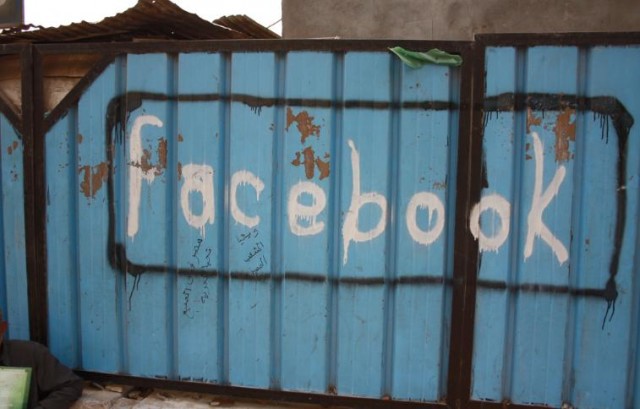
“This country will never be the same,” my driver said when he picked me up at the Cairo International Airport two nights ago. This much Egyptians can agree upon, but this much only.
For the time being, order has been restored. The military is in control. Tahrir Square is clear. Tanks line the streets of downtown Cairo and there are no longer gunshots sounding through the night.
But this country, one that draws something like $10 billion each year in tourism, has been depicted as a war zone for the past three weeks. For now, until Egyptians (and the rest of us) know what happened down in Tahrir Square, the country is left to internalize this revolution without destabilizing its national narrative — one that has changed little since Herodotus first crowned it “the gift of the Nile.”
Not even a week since the departure of Hosni Mubarak, this task seems to have begun. Tonight, from 9:45 to 10 p.m., Nile TV, the state-owned television station, ran a montage of patriotic images set to popular Egyptian music. The video included a series of scenes from the revolution mixed with traditional images of Egypt.
There were Egyptian students, their heads buried in books at the Alexandria Library. There were thousands of Western tourists in sunglasses, flooding into the front gates of the Valley of the Kings. There were attractive businessmen without facial hair, dressed in sharp suits, having important conversations on cellular phones, walking into the front doors of the Cairo Airport. There were farmers with smiling, sun dried faces, plowing their fields. There were long boats of tourists serenely floating down the Nile beneath the setting sun.
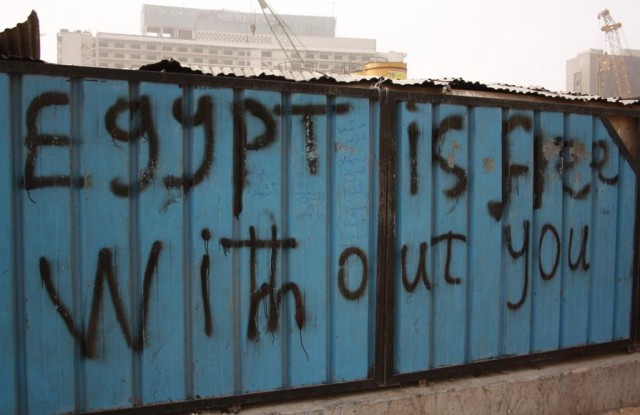
And, intermixed, there were images of the Revolution. There was a triumphant young man, standing on a street corner in the night, waving an Egyptian flag in the glow of streetlights. There was the now famous aerial photograph of hundreds of thousands of Egyptians crammed into Tahrir Square. There were young Egyptian men, carrying soldiers on the shoulders, their arms in the air, triumphant. And there were children, their cheeks painted the colors of the Egyptian flag, looking into the camera lens, smiling.
The narrative was simple: a polishing of surfaces. Egypt is beautiful. Egypt is secure. Egyptians love their country. The new, destabilizing revolution and its roots in decades of economic deprivation and human rights abuse was now swallowed up into the placid, rote, prosaic narrative of Herodotus’ Egypt.
On the streets, the revolution’s hermeneutic crisis has resulted in a rapid effort to wipe all remnants of the uprising from the face of the city. In Tahrir Square this afternoon all of the protesters had departed under military mandate. The blue metal walls separating the Egyptian Museum from the street, walls that during the revolution became murals of defiance against the regime are being taken down or painted over.
Throughout the square hundreds of volunteers were at work repainting the sidewalks, gates and railings around Tahrir. Barring the memorial of photos and flowers for those who died in the last three weeks, all physical remnants of this revolution will soon vanish and Cairo will look just as it was.
But in the wake of this revolution, walking through Tahrir, the smell of fresh paint in the air, it did not feel quite the same.
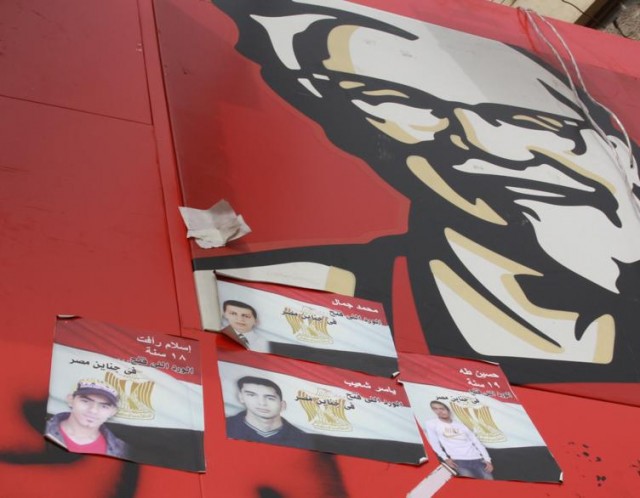
In the five hours I spent walking and photographing graffiti before it was painted over, several Egyptian men approached me. The exchanges were all similar.
They went something like this:
“Hello! What is your name?”
“Peter,” I would lie.
“Yes. And where are you from?”
“Canada,” I would lie again.
“And from where in Canada.”
“Prince Edward Island.”
From here, the men would drop the name of a brother or relative who lives in Canada.
“Are you a journalist?”
“No. I am a tourist.”
“And where is your hotel?”
“I’d rather not say.”
“It is okay. I am not with the government.”
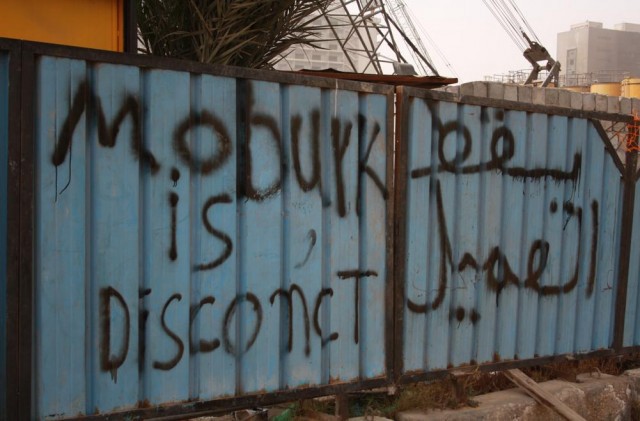
From here, there were requests to follow them into stores around the block to give me business cards for my supposed friends back in Canada. I followed one man in his 60s around the block under the premise he would give me his card. He led me to an empty blown out store with two dusty chairs. While I stood in the doorway he sat down and offered me a seat. I declined and walked away.
In the late afternoon I was standing in the center of Tahrir Square. All around were families carrying flags, smiling. There were children climbing onto tanks, posing for photos, leaning on cannons — like a militarized amusement park. I was taking a photo when I was stopped by a man carrying cups of tea on a tray.
“For you,” he said, handing me a cup.
I thanked him, took the cup, placed it on the step beside me and continued to take the photos. A few minutes passed. The man had walked away. A teenager wearing sunglasses walked over, stood beside me, and looked ahead.
“Do not drink that tea,” he said, looking out on the street. “It is dangerous.”
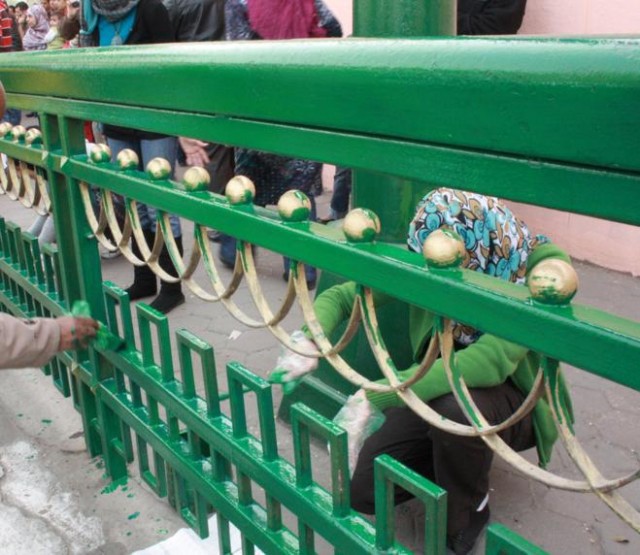
It is easy to forget this in the jubilation of Egypt’s first week, post-Mubarak, where cosmetic adjustments erase relics of the fury that ignited this revolution.
As Egyptians celebrate their victory, activists are using Twitter to compile lists of protesters still believed to be in detention. This afternoon the minister of education announced that schools would be closed through next week due to instability nationwide. Banks will be closed until Sunday. Protests and strikes by the police, textile workers, airport workers and others continue despite military pleas for Egyptians to return to work.
The uprising resulted in the removal of one dictator, but there is a feeling that the social hydra of his legacy waits just beneath the surface, barely visible beneath a sea of his bright-eyed, flag-waving countrymen.
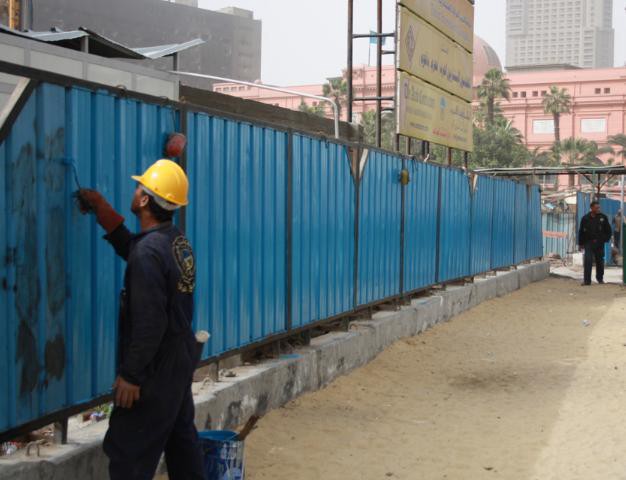
Gordon Reynolds is the pseudonym of a teacher in Cairo. He also posts regularly to Twitter, if you follow him there.
